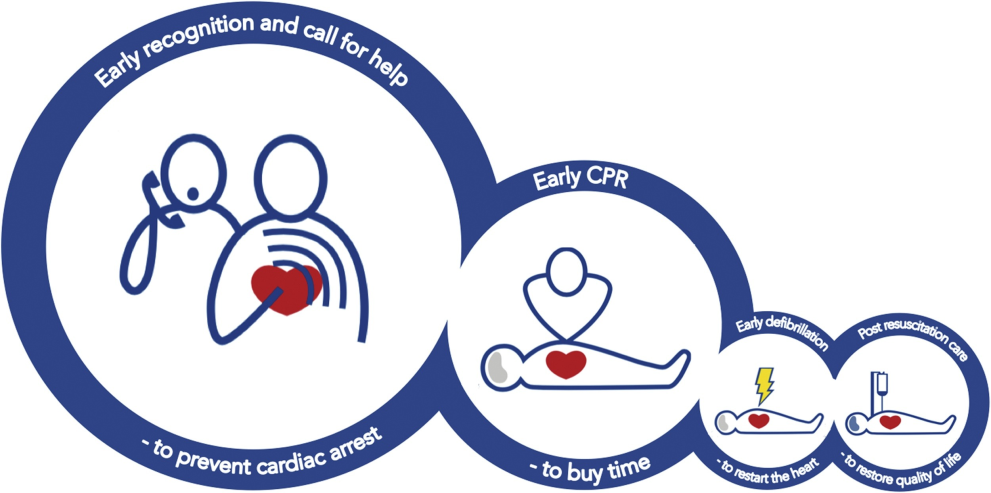When someone experiences a sudden cardiac arrest outside of a hospital, there are a series of consecutive actions that can increase the chances of the victim's survival. This is known as the "Chain of Survival" concept, a term first introduced by the American Heart Association in 1991 and referred to in the Netherlands as the "Keten van Overleving." The Chain of Survival encompasses all the actions that must occur to promptly recognize a cardiac arrest so that rapid resuscitation and defibrillation can be initiated.
The Chain of Survival consists of four links, the first three of which can be performed by individuals trained in basic life-saving skills. The final link must be executed by healthcare professionals. When all these steps are carried out quickly in succession, it significantly increases the chances of survival for a cardiac arrest victim.
New Insights into the Chain of Survival During the ERC Congress in Ljubljana, Slovenia, new insights into the "Keten van Overleving" were presented. Notably, the first two links are significantly more critical than the last two links in the Chain of Survival. The emphasis is particularly on swiftly recognizing a cardiac arrest. The earlier the situation is assessed, the sooner professionals, civilian responders, and AEDs can be deployed.
Several articles support these findings. One such article is Deakin's "The Chain of Survival: Not all links are equal," which describes how not every link in the Chain of Survival carries the same weight. The greatest chance of someone surviving a cardiac arrest occurs when a bystander or civilian responder acts promptly and effectively. Another example is the article from the Department of Emergency Medicine titled "Out-of-hospital cardiac arrest: prehospital management," published in March 2018 in The Lancet. This article discusses the same principle.
Below is an illustration of the new insights into the "Keten van Overleving" presented during the ERC Congress.
Back to the overview